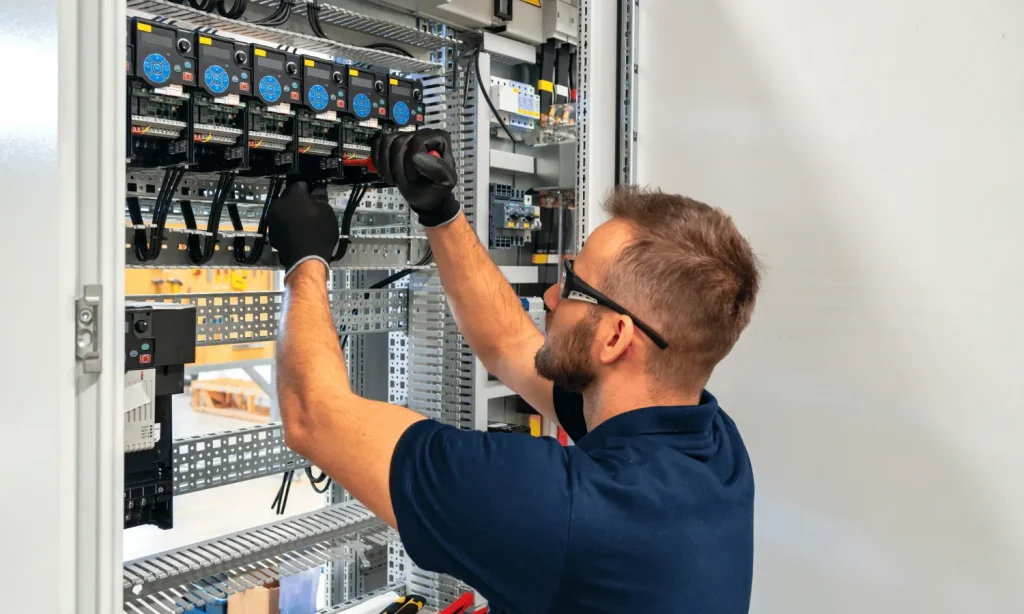When planning a new home or commercial building, one of the most important steps is budgeting for electrical work. Electricity is the main source of any contemporary residence, which drives the simplest and the most complicated cases, such as simple lighting and outlets, as well as complex appliances, heating, cooling, and smart technologies.
Nevertheless, electrical installations may be very expensive, and installation may be complicated, which many constructors and homeowners do not take into account. Proper estimation of electrical costs in new building construction is not only concerned with counting materials, but also labor and permits, regional codes, and future energy requirements.
In the absence of a clear budget, the project will easily exceed the financial constraint due to unforeseen costs, which leads to unnecessary stress and delays. Taking the costs and dividing them into major categories, i.e., wiring, service panels, fixtures, and labor, you would make a realistic estimate that would make your project on time. With proper planning, you are sure that you are safe and efficient, which would make your investment worth spending in the long run.
Understand the Scope of Electrical Work
You have to list what the electrical system has to cover before beginning to compute numbers. The scope differs with the nature and size of the building.
- Home Projects: Home wiring (basic outlets, lights, appliances in the kitchen, HVAC, etc.) and optional upgrades such as home theaters or EV charging stations.
- Business Ventures: Wiring on a larger scale with a heavier circuit, setting up a backup generator, and a lot of lighting is needed.
- Custom Options: Smart systems, or systems with solar power, or security systems may make it more expensive.
Measure the Square Footage
The costs of electricity are estimated per square foot. This provides a starting point figure before considering extras.
- Rudimentary Housing Wiring: $3-$5 per square foot.
- Mid-Range Installations (having Outlets and More Lighting): $5-$7 per square foot.
- High-End Projects (intelligent Systems, High-End Lighting): $8-$12/ sf and above.
As an illustration, a 2000 square foot house can be priced at:
- Basic Wiring: $6,000–$10,000
- Mid-Range Wiring: $10,000–$14,000
- High-end Wiring: $16,000–$24,000
This benchmark offers a crude outline, but it does not reflect specific expenses. Many contractors enhance this by using electrical estimating Services, which provide detailed breakdowns tailored to local codes, material prices, and labor rates. Leveraging such services ensures greater accuracy compared to depending solely on square-foot averages.
Break Down Major Cost Categories
A better estimate is done by subdividing electrical work into certain categories.
Service Panel and Main Wiring
- Each new construction must have a central electrical panel (breaker box).
- The prices lie between $1,500 and $3,500, depending on the amperage (100-400 amps) and brand.
- Extra expense when required to have more than one sub-panel in big houses.
Wiring and Conduit
- The copper wiring is sold in terms of length and gauge.
- Home rough wiring is usually approximately $2000-$8000 on average, depending on the size.
- Business projects that involve conduit also increase the budget.
Outlets and Switches
- Installation of standard outlets: $75-$150 a piece.
- GFCI sockets (in kitchens and bathrooms): $100 -$200 each.
- Smart outlets or USB outlets: more expensive.
Lighting Installation and Fixtures
- Simple ceiling lights: $100-$300 apiece installed.
- Recessed lighting: $150–$250 per light.
- Niche or bespoke lighting: $500-$1000 per item.
Appliances and Dedicated Circuits
- Dedicated circuits are required in kitchen appliances, HVAC, and laundry machines.
- Prices range between $500 and $2500 for each appliance with full fitting wiring and breaker.
Special Systems
- Security systems, PCMs, home theaters, or EV chargers.
- The prices are quite extensive: $1,000-$10,000+ by technology.
By listing each category, you’ll create a more detailed and realistic budget.

Factor in Labor Costs
The labor consumes 40-60 percent of the total electric costs. The rates differ in accordance with the location and the complexity of the project.
Licensed Electricians: $50 to 120/hour.
Apprentices or Journeymen: $30-60/hr. (trainee).
A commercial project, such as a large one, might need a complete crew, which would cost thousands in labor costs.
Labor costs may vary between 4000-12000 dollars in the case of a new house. The cost of commercial projects is generally very expensive because of their size and compliance.
Add Permit and Inspection Fees.
Electric labor needs permits and inspections to be secured. This step should not be skipped, as it may lead to insurance issues and resale.
- Residential Permits: $200- $1000, varying with the rules of a particular area.
- Commercial Permits: $1,000–$5,000 or more.
Permits normally have the costs of inspections that may, at times, attract some extra charges in case of re-inspections.
Consider Regional Cost Differences
The location is a significant factor in electrical cost. For example:
- City Centres: Greater wage rates because of demand.
- Rural Regions: The costs of delivering materials can go up.
- Stricter Codes in States: Additional costs of compliance.
In estimating, always inquire about average rates in your area and then finalize the estimates.
Account for Hidden or Extra Costs
Electrical installations, just as any other construction activity, can reveal unforeseen costs:
- Upgrading Service Connections: In case the utility company needs heavier lines, the expenses go higher.
- Code Modifications: Local codes might need more outlets or GFCI circuits.
- Energy-Efficient Upgrade: LED lights or solar addition are expensive to buy in the short run, but economical in the long run.
- Temporary Power Supply: This is required in sites that are being built until permanent wiring is done.
The inclusion of a 10-20% contingent fund is used to accommodate unexpected events.
Example Estimate: 2,500-Square-Foot Home
The following shows an example of the cost of a mid-range new home (2,500 square feet):
- Service Panel & Wiring: $6,000
- Outlets & Switches: $3,500
- Lighting Fixtures (20 Recessed and 10 Standard): $5500.
- Devoted Circuits (hvac, Appliances, Laundry): $4,000.
- Special Systems (Internet Wiring, Security): $3,000.
- Labor: $8,000
- Permits & Inspections: $800
- Contingency (15%): $4,500
Total Estimate: $35,300
This is congruent to the average of $30,000-$40,000 for a new mid-sized house.
Tips to Keep Electrical Costs Under Control

- Plan Early with Your Electrician: Layout changes made last minute are costly.
- Bundle Installations: Hiring several fixtures simultaneously saves on work time.
- Use Energy-Efficient Options: LED lights, efficient appliances can be quite costly initially, but reduce electricity payments.
- Avoid Over-Customization: fancy lighting and intelligent systems are fast escalating prices.
- Get Multiple Bids: This will give you a fair price by comparing at least three licensed electricians.
Conclusion
The calculation of electrical costs of a new building should be conducted with a keen sense of balance between square-foot counts, a critical division, and expert assistance. Although the starting point of baseline estimates is at $3- $5 per square foot, the actual price suffers under the influence of materials, labor, location variation, and personalized features. The budget can be separated into parts such as service panels, wiring, outlets, lighting, and labor, after which you will be in a good position to see where the money goes.
Also, make sure to include permits, inspections, and what is termed as a contingency fund in case of unforeseen problems. Above all, collaborate intimately with certified electricians to achieve safety as well as adherence to building codes. By thinking carefully, you will come up with the right budget that will not lead to financial shocks, and your new construction project will be safely and efficiently powered.
FAQs
How Much Does It Typically Cost to Wire a New House?
The average cost of wiring a new household is between 3 and 7 dollars per square foot, which varies depending on the size of the house, the complexity of the electrical system, and the labor costs in the region. In the case of a 2,000-square-foot house, this amounts to approximately $10,000-$15,000.
What Factors Influence the Electrical Cost for New Construction the Most?
The greatest cost drivers are the square footage, the type of wiring and fixtures installed, the quantity of outlets and points of lighting, the labor rates in your area, and the permit/inspection charges. Home automation, security systems, and EV chargers are custom features that may cost a significant amount of money to add to the total budget. In case of any contingency, always include a 10-20% or so contingency fund.




